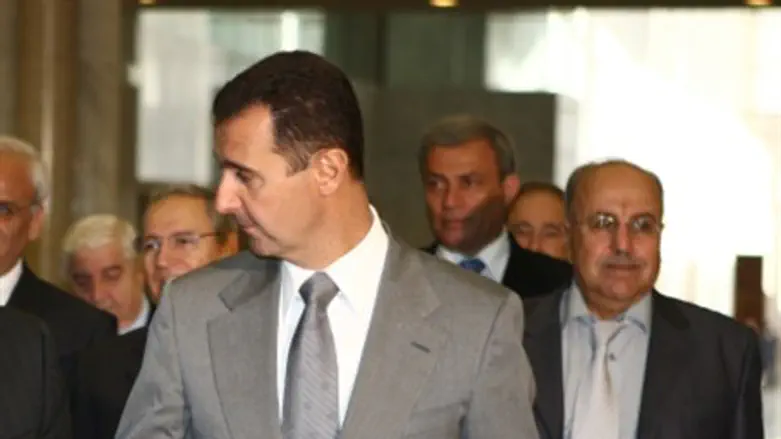
The regime of Syrian President Bashar al-Assad was behind a pair of car bomb attacks which killed 55 people outside a military intelligence complex in the Qazzaz area of Damascus on May 10, newly-leaked documents obtained by Al Arabiya and published on Sunday reveal.
The documents are part of some highly-classified Syrian security files obtained by Al Arabiya from opposition sources. The channel said that it has verified and authenticated hundreds of these documents and that it has decided to disclose ones with substantial news value and political relevance.
Following the twin-bombing in the Qazzaz neighborhood of the capital Damascus, Syria’s foreign ministry said the attacks were a sign that the country was facing foreign-backed terrorism. However, Al Arabiya reported, the leaked documents implicates the Syrian regime in the deadly Qazzaz explosions.
In a document sent from the presidential palace on May 8, two days before the fatal bombs, Maj. Gen. Dhu al-Himma Shalish, head of the Special Security of the Syrian president, addressed Saqr Mannon, head of the Air Force Intelligence Branch-291, telling him of the need to convince the international public opinion of the presence of terrorist groups in the country.
Shalish said that his orders follow instructions of the Joint Command, possibly in reference to Iran, Russia and the Syrian regime.
He followed-up his commands by describing to Mannon the needed steps for the upcoming explosion.
The major general indicated that he was acting by the direct orders of Assad, according to Al Arabiya.
A second leaked document, this time signed by Saqr Mannon and sent from the Army and Air Force headquarters, ordered Suhail Hassan, a colonel in the Syrian Air Force Intelligence, to apparently carry out the Qazzaz explosion, and to report back once the mission is accomplished.
The leaked files published by Al Arabiya say that Assad sacrificed hundreds of citizens and low-ranking security forces in order to convince international public opinion that terrorists have infiltrated the Syrian territory and started conducting mortal operations.
These documents were published one day after Al Arabiya published classified documents which allege that Turkish pilots killed in Syria after Syrian forces shot down their plane were deliberately executed following consultation between Damascus and Moscow.
A senior adviser to Turkish Prime Minister Recep Tayyip Erdogan said on Sunday that the documents were fake, adding that “it is well known that intelligence documents do not look like this.”
Meanwhile on Sunday, a suicide car bomb rocked the Kurdish city of Qamishli, state television quoted by AFP said.
It was the first such attack in Syria's Kurdish region which has kept out of the conflict between rebels and the regime.
The broadcaster said at least four people were killed in the Qamishli blast, while the Syrian Observatory for Human Rights said eight members of the security forces were killed and that the attack targeted their headquarters in the city.
"A suicide terrorist using a car laden with explosives attacked the western district of Qamishli," the television said, according to AFP.
The Britain-based Observatory said "at least eight members of the security forces were killed, and 15 were injured," adding that the blast was followed by heavy gunfire.
The Qamishli attack comes less than a week after a twin bomb attack struck the heavily-guarded Syrian army headquarters in the heart of Damascus, killing at least four of its guards. An Islamist rebel group claimed the Damascus attack.
(Arutz Sheva’s North American Desk is keeping you updated until the start of Sukkot in New York. The time posted automatically on all Arutz Sheva articles, however, is Israeli time.)